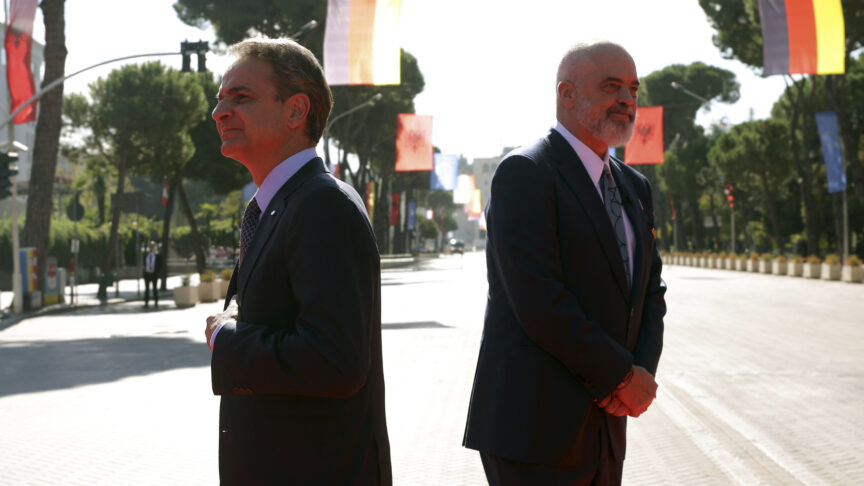Europe without Borders 2025: Overcoming the EU neighbourhood policy deadlock
Three options for the Western Balkans, the Eastern Partnership countries and Turkey to participate more or less fully in the EEA.
With all Europe talking about Grexit and Brexit, the possible closure of national borders, and with calls to fortify Europe against illegal immigration, the threat of IS and an aggressive Russia growing ever louder, it may seem like an odd time to propose a bold and inclusive idea to make barriers within Europe disappear by 2025.
Then again, it is precisely the absence of a positive vision for the EU and the rest of Europe – in essence a crisis of European confidence – that lies at the heart of the conundrum the EU faces today. More specifically, the Eastern Partnershipfor Ukraine, Belarus, Moldova, Georgia, Armenia and Azerbaijan was created as a consolation prize in the neighbourhood policy for East and Southeast Europe. This is because the EU has been unwilling over the past decade to make an explicit offer of potential membership or any serious attempt at economic and political integration (at least to those countries that requested it). This follows the case of Turkey, where rejection by Europe has largely led to a rejection of Europe.
Moreover, after 20 years of neglect, those Western Balkans states not yet in the EU (except perhaps Montenegro) are also facing an accession process that, given the requirements set for Croatia's accession, might easily take until the end of the next decade. This reticent approach to enlargement on the part of the EU risks losing the people and political elites of all of these countries, with highly undesirable consequences for peace, stability and prosperity in the region and in Europe as a whole. The prospect of EU membership “maybe in 25 years” is extremely difficult, if not impossible to sell politically. Brussels' reluctance to pursue a more proactive enlargement agenda is rooted in the many internal issues it needs to address before the EU is ready to accept new members. A realistic neighbourhood policy therefore needs to take this into account, and offer an attractive, intermediate integration step for EU candidate countries that is achievable in 5-10 years without harming their prospects of full membership.
Luckily, there is an institution that fits the bill perfectly: the European Economic Area (EEA).
EEA membership is very attractive in that it extends most of the EU's four freedoms – of workers, services, goods and capital – to its members, something enjoyed by Norway and Iceland, for example. It would mean that from the Dingle peninsula in the West to Tbilisi in the East customs controls could be a thing of the past. Citizens could work, live and offer services anywhere in this enlarged EEA. Complicated issues such as monetary union, a common foreign and defence policy, or a fisheries and agricultural policy would only become an obligation if and when a country completed the process of EU accession.
There are three options for the Western Balkans, the Eastern Partnership countries and Turkey to participate more or less fully in the EEA:
● Join the EEA Agreement individually or en bloc (e.g., CEFTAas a whole)
● Become EFTA members and de jure part of the EEA;
● Become associate EFTA members and de facto part of the EEA (as Finland did in 1961-1986).
Of course, there would be technicalities to overcome regarding the compatibility of CEFTA countries and Eastern Partnership countries such as Ukraine, Moldova, Georgia, and Turkey. However, that should not be an issue, provided the political will is present at the top to drive such a strategic push.
EEA accession would replace the current situation whereby top politicians from the region often request a clear path to EU membership and, for the most part, get little in the way of a clear reply from their EU counterparts. It would mean steady, incremental progress instead of repeated disappointment and frustration for the political elite and, more importantly, the people of the region.
Ideally, all these countries would apply join the EEA in the next two years (and would also have a visa-free regime with the EU by then) and join by 2020, with possible transition periods for the free movement of workers until 2025. But by 2025, a Europe without borders should be a reality. And that is when a reformed and strengthened EU ought to be ready for a new round of enlargement.
Andrej Novak is an independent expert on Eastern Europe based in Germany and a consultant at European Cosmopolitan Consulting.
The European Council on Foreign Relations does not take collective positions. ECFR publications only represent the views of their individual authors.


